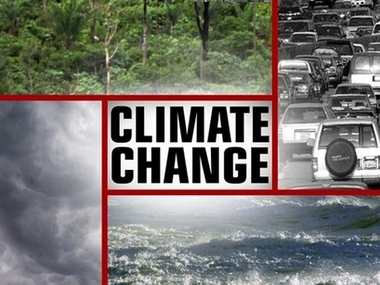Cities at risk of rising sea levels
(AP)Updated: 2007-03-28 11:04
LONDON - More than two-thirds of the world's large cities are in areas vulnerable to global warming and rising sea levels, and millions of people are at risk of being swamped by flooding and intense storms, according to a new study released Wednesday.
More than 180 countries have populations in low-elevation coastal zones, and about 70 percent of those have urban areas of more than 5 million people that are under threat. Among them: Tokyo; New York; Mumbai, India; Shanghai, China; Jakarta, Indonesia; and Dhaka, Bangladesh.
The peer-reviewed scientific study said it is the first to identify the world's low-lying coastal areas that are vulnerable to global warming and rising sea levels. It said 75 percent of all people living in vulnerable areas are in Asia, with poorer nations most at risk.
The study gives no time frame for rising sea levels or the potential flooding in individual countries. It warns, however, the solution to the problem will not be cheap and may involve relocating many people and building protective engineering structures. And, it adds, nations should consider halting or reducing population growth in coastal areas.
"Migration away from the zone at risk will be necessary but costly and hard to implement, so coastal settlements will also need to be modified to protect residents," said Gordon McGranahan of the International Institute for Environment and Development in London, a co-author of the study.
IIED publishes the journal Environment and Urbanization. The other two co-authors of the study are Deborah Balk of the City University of New York and Bridget Anderson of Columbia University.
Separately, the authoritative Intergovernmental Panel on Climate Change said in a draft copy of a report expected to be released next week that coastlines are already showing the impact of sea-level rise. The draft copy, which was obtained by The Associated Press, said about 100 million people each year could be flooded by rising seas by 2080.
The draft copy warned that two biggest cities in North America - Los Angeles and New York - are at risk of a combination of sea-level rise and violent storms. By 2090, under a worst-case scenario, megafloods that normally would hit North America once every 100 years "could occur as frequently as every 3-4 years," the draft said.
In February, the IPCC warned of sea-level rises of 7-23 inches by the end of the century due to global warming, making coastal populations vulnerable to flooding and more intense hurricanes and typhoons.
Asia is particularly vulnerable, the study said. The five nations with the largest total population living in endangered coastal areas are all in Asia: India, Bangladesh, Vietnam and Indonesia.
Between 1994 and 2004, about one-third of the world's 1,562 flood disasters occurred in Asia, with half of the total 120,000 people killed by floods living in that region, the study said. In addition, more than 200,000 people were killed by the Indian Ocean tsunami of 2004.
"Migration away from lowest elevation coastal zones will be important, but can be costly and difficult to implement without causing severe disruptions," the study said. Still, it said, "relatively small shifts in settlement location, out of a coastal plain onto more elevated ground, can make a major difference."
|
||
|
||
|
|

